
11 minute read
LOCAL HISTORY
Meet the man giving our past a future
Under his guise, Milton Keynes Museum has grown into a jewel of Milton Keynes. It's a place with true family appeal; where youngsters have fun, and older generations reminisce. And it's a place where everyone smiles. Fresh from being awarded an MBE for his tireless work, Pulse's Sammy Jones spoke with Bill Griffiths.
As the director of Milton Keynes Museum, Bill's daily routine is as varied as the artefacts housed at the Wolverton centre.
From meeting and greeting important visitors like the Lord Lieutenant of Buckinghamshire or potential funders, to repairing cobbled flooring; from making particularly flavoursome mulled wine (for Christmastime visitors) or rodding drains.
“I think it's fair to say that at one time or another I have carried out every job at the Museum and I love the variety,” he tells me.
But there is one day on the horizon that will be truly unique; a trip to Buckingham Palace to collect his MBE. In the 2022 New Year Honours List, Bill was given the gong for services to Museums and the community in Milton Keynes.
“I got home from work and Diana, my wife, mentioned there was some post. I didn't read anything on the large, thick envelope, but said something about it being 'more tax forms to complete, I suppose.'
“When I opened it up, there it was,” he says, remembering the special moment, “I had no idea and no expectations, I could feel the blood drain from my face and didn’t know what to say or how to react – it was a mixture of joy and tears. I was just speechless.”
The award gives a very special nod to Bill's countless achievements and unbridled passion for the Museum which has seen him at the helm for nigh on three decades.
Having previously spent more than 30 years as a zoologist looking after education and public information at London Zoo, he began as a volunteer at the Museum in 1992, and took on the role of director a year later.
“People are often amused that I switched from working in zoology to working in a Museum but I see them as having much in common – they are both about life,” Bill said, “What I have also discovered is that I get a real buzz from finding out some aspect of these, or any other related to our world, that is new to me and then trying to find ways of passing on that excitement and fascination to others.”
One of Bill's first projects as a volunteer was preparing a Development Plan for the Commission for New Towns. Bill has been instrumental to the success of the Museum and its growth since the get-go.
It hasn't always been easy, and he has had to fight opposition. Overcoming obstacles? He'd probably be an ace at the hurdles in the Olympics based on challenges he has taken on and won.
It's a trait shared with Milton Keynes Dons chairman Pete Winkelman: “His vision and dedication is incredible,” Pete said, “Bill could have given up a million times, but he didn't – and just look at what he has achieved!”
One of his darkest times came in the early hours of New Year's Day in 1996 when the Museum was targeted by arsonists. It caused mass devastation and buildings and unique artefacts were lost forever.
Undeterred, standing among the smouldering ruins, Bill vowed that it would rise from the ashes.
“As well as losing half the collection and the buildings where the Museum had begun, we didn’t really know that people would come back in the numbers that would make us sustainable,” he recalled, “Thankfully, they did and we were. Being shut-down after Covid, leaves us with similar problems.
“Extra effort was needed to recover after the fire, and I knew I would need to work a sevenday week until it was up and running again, and that became the norm. I suppose that's when it took over my life,” he says with a smile.
Bill lives and breathes the Museum. There is seldom a time when he isn't working, or working on a plan. Do you ever put your feet up?
“Only very rarely, I am afraid. There is so much to do and even more to think about,” he
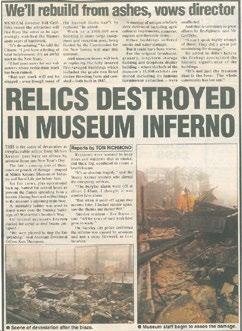
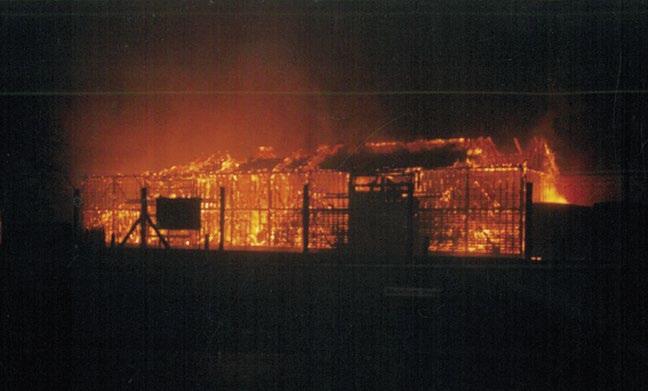
The shocking scene on New Year's Eve 1996 and how it was reported in the local press at the time. Bill has been involved with the MK Museum since joining as a volunteer in 1992 and there isn't a job on-site that he hasn't carried out at some point or another
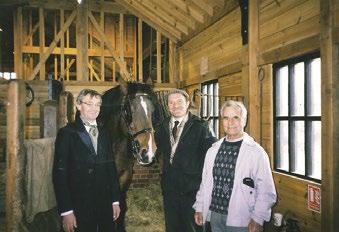

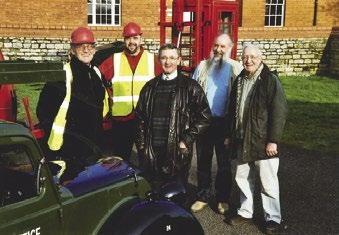
explains, and if you are quiet you can almost hear his mind turning over, “It’s also a project I know I will leave unfinished – perhaps not a bad thing.
“I have Diana, two daughters and two grandchildren and family time remains precious, but my family all agree that work is good for me. Boring aren’t I?” he laughs.
Heading up a history hub in the new town can be tricky at times, and of course it attracts the usual nonsense from those who know no better. 'Museum? You have no history!' is a regular mumble from those who have never even visited our not-so-concrete jungle.
Bill has become an expert at educating the ill-informed.
“Everywhere has some history and that thought really needs to be challenged,” Bill replies, “Are certain aspects of history more important than others? Is history about the wealthy, the powerful and the victors, or should it be about the lives of ordinary people, how they earned a living, played and loved?
“Before developers had a legal obligation to carry out archaeological research to allow building work to start, the Development Corporation decided it was the right thing to do and established an Archaeological Unit, ensuring that Milton Keynes was one of the best archaeologically researched areas of its size in the country.
“They also thoughtfully preserved all the existing towns and the village, each with its own story, as they developed new Milton Keynes.
“Among the Bronze Age finds is a set of gold torcs that were found with pottery, enabling similar finds in the country to be dated more accurately.
“If we just use the Museum farm site as an example, there is Neolithic pottery of three styles, and then there is building 200 – the largest Bronze/Iron Age roundhouse so far described in the country, Bancroft Roman Villa, the association with Dr John Radcliffe and Oxford, the Grand Union Canal and Wolverton, the first town in the world built for the railway...”
And that's not all of it: “Of course there is much more, enough to fill a gallery, but now there is also the history of the New Town and that’s a story that must be told to help both Milton Keynes residents and all future new towns.”
Which brings us neatly on to one of Bill's current projects; working to fund the two new galleries that will bolster the Museum and allow it to tell both the ancient and the modern story of the town.
“I am really very disappointed that we have not yet raised the funding for the exhibitions in the new galleries – about £2 million from preCovid estimates,” he admits.
“I hope that I will live to see the galleries open – but, more than that, see it carrying on the same level of interaction and volunteer engagement as the rest of the Museum.
“Getting the buildings up has been a real achievement. We had always wished to tell the story of the New Town and of its Ancient History using the archaeological collection.
“Unfortunately, old farm buildings are completely unsuitable to achieve this adequately. The decision of the Council to tell both these stories together for its 50th Anniversary provided the opportunity but first they wished to consider other sites too.
“Thank goodness that independent consultants recommended the Museum and so began a partnership with the Council...it was a relief to see them up.”
The Museum prides itself on being a handson history hub and Bill obviously takes much joy from those who explore it: “One of the best things is never knowing what the next visitors reaction will be. It might be like the Russian lady who told us how their Museums are full of treasures – rich with jewellery, icons and beautiful ceramics, whilst in the UK we seem to be prepared to hang any old c**p on the walls and then call it a Museum,” he laughs at the memory, “She enjoyed her visit though,” he promises.
“I also love the delight of visitors when they have been encouraged to play the Pianola, make toast or use the telephones. This is particularly true of children but not exclusively so – adults can show the same pleasure. They sometimes have to be dragged off the Pianola, so that others can have a go!”
The Museum has celebrated its first 40 years, but where does Bill hope it will be in another four decades?
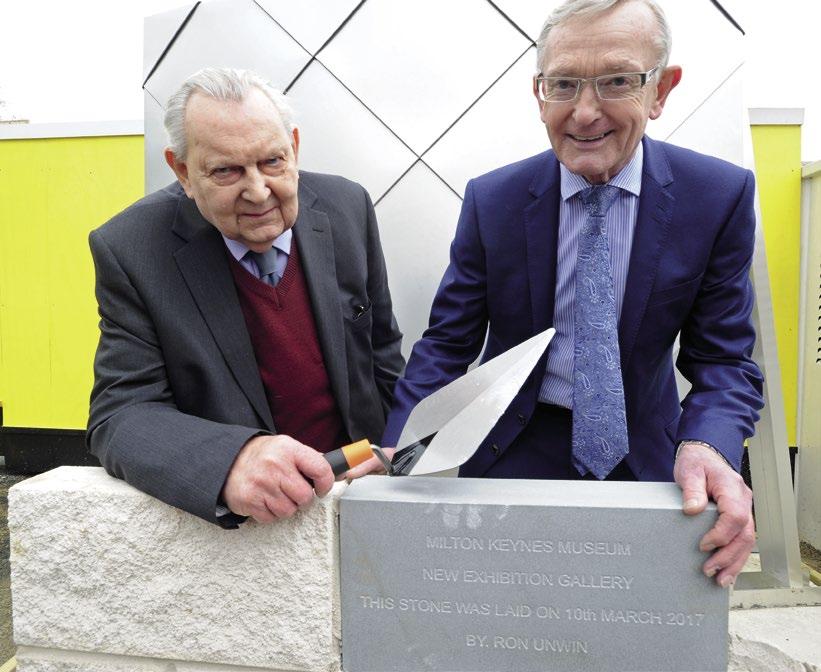
The new galleries Volunteer Ron Unwin laying the foundation stone assisted by Bill Griffiths
“I hope that it will have vastly developed all its present attributes; that it will be even more immersive and interactive and that volunteers will still be very much at its core – still contributing to every aspect of the running of the Museum. I hope that it will be recognised as a leading museum and an example of what museum’s should be. It will be an important attraction, a reason for people from far-afield to visit Milton Keynes.
“As important, and I hope that this is achieved much sooner, is that it should be a place that every individual feels is welcoming and relevant – it is a place that they own and can influence because it tells the story of their home. If they are able, they should feel that they can become involved in any way and at every level – from regular visitor or occasional volunteer to being in an advisory capacity or on the Board.”
But while Bill has one eye firmly on the future, he has the other trained on the immediate plans – and as you would expect, there are plenty of those too. Securing funding for those aforementioned galleries is a priority, and in turn, the present entrance will become the Education Centre. The existing Museum displays will be upgraded and interpretation will be completed, 'so that it tells a coherent story.'
“The bandstand from Willen Lake will be in use, as will the extended cart-sheds, allowing the large agricultural equipment to be displayed under-cover.
“The Nature Centre and trail around the perimeter of the site will also be completed, and we will continue to expand the Education Service and volunteer teams.
“You asked me about my personal highlights from the Museum, and having the volunteers receive the Queen's Award for Voluntary Service was a real highlight - they really are at its heart.
“They provide so much but it is the manner of their contributions too, particularly the knowledge and expertise they have gathered and enjoy sharing with visitors. They are awesome and the Museum is what it is because of them.”
With so much to do is there even time to think of retirement in the future?
“I would love to go on as long as I can do the job,” Bill promises, “I have no wish to retire...”
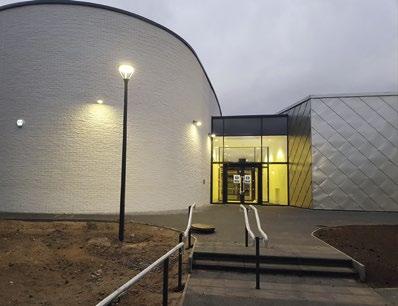
Milton Keynes Museum is one of the best interactive museums, a perfect outing for all ages, staffed by friendly volunteers, and highly recommended by visitors on TripAdvisor. This feature was written by Milton Keynes Museum. Find out more about forthcoming events and see our opening times at: miltonkeynesmuseum.org.uk










